Continental TrueContact All-Season Tire Review

Continental is no small player in the automotive world, but still sits outside the top three when it comes to new tire sales in the U.S. With its new TrueContact all-season tire, it means to take on top dogs like Bridgestone, Michelin and Goodyear.
All Seasons On The Menu
There’s mind boggling science behind some of the more important characteristics of this tire. Temperature sensitive chemicals are used in the compound to help reduce rolling resistance, which improves fuel efficiency. Also, something called silane is added to enhance grip on wet pavement.
You wouldn’t know any of that by looking at them, but the tread patterns and design tell a story as well. Designed to enhance steering response and handling, the symmetrical tread exposes all of Continentals secrets. Three wide grooves help prevent hydroplaning while improving traction during wet driving. Additionally, sipes (little grooves in the tire) are used to provide additional biting edges for when you drive in the winter.
Finally, there is another layer of rubber inside the tire that is designed to cushion and absorb irregularities for a quieter and smoother feeling ride.
The TrueContact tire also features indicators in the tread that help owners know if they are wearing unevenly and if there is sufficient remaining tread for driving in cold or wet weather.
They’re easy to spot: the alignment indicator is made up of three lines in the tread-block, which will be offset if the alignment is out-of-spec. On another part of the tread, there are the letters D, W and S, which stand for Dry, Wet and Snow. As the tire wears, these letters will fade away indicating what kind of weather the tire is still suited for.
Sizing up the Competition
With the spec-sheet and science out of the way, it’s time to compare the Continental TrueContact to tires from one of the biggest names in the industry: Bridgestone.
Our test vehicle was an Audi A4, equipped with Continental tires, while other A4s were sporting Bridgestone Ecopia all-season rubber.
Testing Wet Braking Distances
The first three runs of this test were done on the Bridgestone tires, where we saw an average braking distance of 82.25 feet. When we switched to the Continental tires, it was immediately apparent just how well the tires slowed the car down in the wet. For two consecutive runs, the TrueContact tire stopped 10 feet shorter than the Bridgestones.
Comfort
The Continental tires clearly felt more comfortable with the rough roads, smoothing out smaller bumps and softening blows from bigger ones. Unlike in the Bridgestone equipped Audi, the bumps and imperfections didn’t feel like they were bullying the car around and pushing it left and right.
Handling
Jumping into the Continental TrueContact equipped Audi, reaction times were far more natural allowing the car to feel like the sport-sedan it was engineered to be. The tires held on nicely and felt like they had a higher limit than Bridgestone’s rubber.
Pricing:
Continental offers a massive six-year warranty on the tread-life of their tires. When it comes to prices, you can expect to pay less for the Continental tires than the Bridgestone alternative. The 225/50/17 tires we tested cost about $139 each, compared to $147 for the same sized Bridgestone Ecopia.
The Verdict:
As an all-season tire, the TrueContact is available in a number of sizes and speed ratings, and shouldn’t be hard to find in any major retailer.
While we were unable to test Continentals claims of solid fuel economy, it’s clear that the TrueContact has some definite advantages over its rivals.
LOVE IT
- Wet braking distances
- Higher limits
- Responsive handling
LEAVE IT
- Unknown impact on mileage

Sami has an unquenchable thirst for car knowledge and has been at AutoGuide for the past six years. He has a degree in journalism and media studies from the University of Guelph-Humber in Toronto and has won multiple journalism awards from the Automotive Journalist Association of Canada. Sami is also on the jury for the World Car Awards.
More by Sami Haj-Assaad


















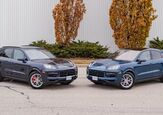

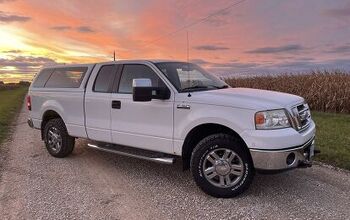


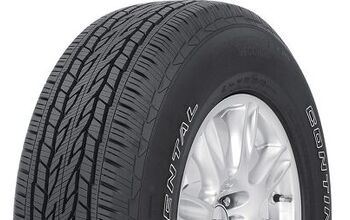
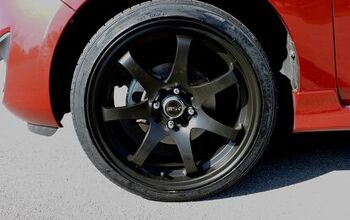

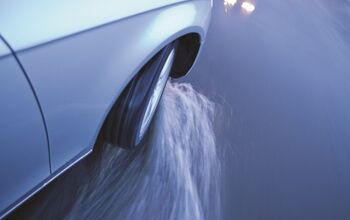
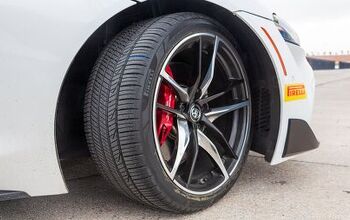










Comments
Join the conversation
We're looking for a new set of tires, and these are competitively priced with anything else we can find! Looks like we have a winner. Thanks for the write-up!
I've got 6000 miles on my new set of these tires on my 2011 Prius, and I've noticed virtually no mileage variance from the previous tires. The thing I HAVE noticed is improved handling and navigation in snow. Because the Prius is so light it does not do well in snow, but these tires help a great deal. They're quieter than the previous brand, too. Win-win! I paid $100 per tire and feel I got a great deal on a great tire!